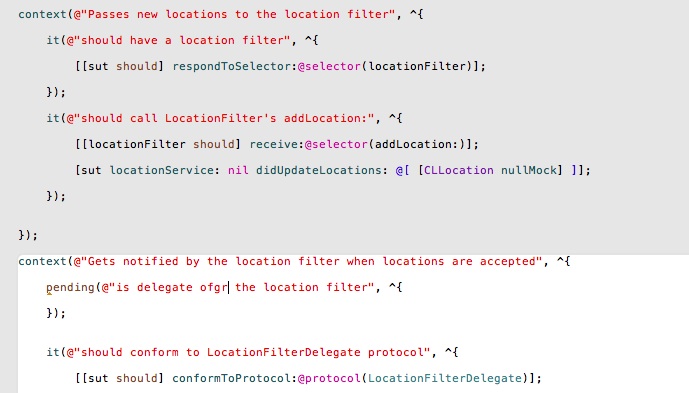Over on inessential.com, Brent Simmons discusses brace style in Objective C. I’m glad he’s seeing the light. In 25 years of coding in C dialects, I’ve never understood why people think that omitting the brackets improves readability. Coding is not, generally, improved by brevity or obscurity. The purpose is to write code that is clear in its intent, both to the compiler, the author, and future maintainers. If you know a thing about visual design, then you know that white space is your friend, so there is no need to skimp on that either.
Tag: Objective-C
Unit Testing Core Data NSManagedObject with Kiwi
The project that I am working on at the moment utilises Core Data for storing data, and that meant that I would need to figure
Core Data: Transient Properties on NSManagedObject
Transient properties are properties on a NSManagedObject that are not persisted to the object store. They are calculated at runtime, usually on the basis of other property values. The classic example would be for a `Person` object, generating a `fullName` property that is not persisted to the object store as both `firstName` and `lastName` are, so it can be composed at runtime.
TDD in Objective-C: Scoping an iOS Project via Mocks and Protocols with Unit Tests in Kiwi
### Overview The following is an overview of how I approach Test Driven Development (TDD) for iOS projects. I use [Kiwi](http://github.com/allending/kiwi) as my TDD tool
TDD Exercise – A StringCalculator in Objective-C
After struggling over a custom UIControl implementation for iOS, I decided to take a little time out to play and learn more about design patterns and approaches in Objective-C. This exercise was the basis for learning a great deal about how I approach the design of a solution, and I hope it will benefit my other developments.


